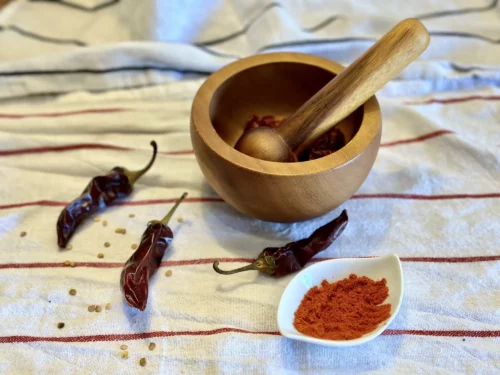- No. 268 Xianghe Street, Economic Development Zone of Xingtai city, Hebei 054001 China
- Byron@hbhongri.cn
red sweet paprika
The Versatility of Red Sweet Paprika A Culinary Delight
Red sweet paprika, known for its vibrant color and distinctive flavor, is an essential spice used in kitchens around the world. Originating from Central and South America, paprika is derived from grinding specific varieties of Capsicum annuum, a type of pepper. The spice has evolved and found its way into diverse culinary traditions, especially in European, North African, and Middle Eastern cuisines. This article explores the characteristics, culinary uses, health benefits, and cultural significance of red sweet paprika.
Characteristics of Red Sweet Paprika
Red sweet paprika is known for its striking crimson hue, which can range from bright red to deep burgundy. This color is attributed to the high concentration of carotenoids, particularly capsanthin, found in the peppers. The flavor profile can vary; while sweet paprika offers a mild taste with subtle sweetness, smoked paprika provides a robust smoky flavor, enhancing dishes with depth and complexity. The spice is typically available in powdered form, but whole dried peppers can also be found.
Culinary Uses
The culinary versatility of red sweet paprika makes it a staple in numerous dishes
. In Hungarian cuisine, paprika is the star ingredient in goulash, imparting a rich flavor and vibrant color to this hearty stew. Spanish cuisine also showcases sweet paprika, especially in dishes like paella and chorizo, where it adds a warm and earthy flavor profile. Additionally, paprika is commonly used as a garnish, adding visual appeal and a hint of flavor to deviled eggs, potato salads, and various dips.In Middle Eastern cooking, red sweet paprika plays a vital role in spice blends such as harissa and baharat, providing a sweet and slightly smoky note that balances out spicy and savory elements. It’s also frequently used in marinades, spice rubs, and sauces, making it a fundamental component in many culinary preparations.
Health Benefits
red sweet paprika

Red sweet paprika is not only a flavor booster but also offers several health benefits. It is rich in vitamins A and E, important antioxidants that promote eye health and skin vitality. Furthermore, paprika is a good source of vitamin C, which supports the immune system and enhances iron absorption. The presence of capsaicin, the compound responsible for the heat in peppers, has been shown to have anti-inflammatory properties and may help boost metabolism.
Moreover, the carotenoids found in paprika can contribute to overall health by protecting the body from oxidative stress. Incorporating red sweet paprika into meals can enhance flavor while providing nutritional benefits, making it a smart addition to a balanced diet.
Cultural Significance
Red sweet paprika holds cultural significance in many regions, particularly in Hungary, where it is often referred to as the lifetime spice. It is celebrated in annual festivals and is a point of national pride. The spice has also become a symbol of identity and tradition, deeply embedded in the culinary practices of various cultures.
In Spain, paprika is a crucial ingredient in traditional dishes, and Spanish artisans pride themselves on producing high-quality smoked paprika, known as pimentón. The craftsmanship involved in drying and smoking the peppers has been passed down through generations, making it a cherished part of the culinary heritage.
Conclusion
Red sweet paprika is more than just a spice; it is a vibrant and versatile ingredient that enriches culinary experiences across the globe. Its sweet flavor, beautiful color, and health benefits make it a favorite among chefs and home cooks alike. From hearty stews to elegant garnishes, paprika has a place in a multitude of recipes, and its cultural significance further enhances its allure. As we continue to explore the world of spices, red sweet paprika will undoubtedly remain a staple in kitchens, delighting palates and adding a touch of warmth to our meals. Whether you’re seasoned in the kitchen or a culinary novice, incorporating this delightful spice can elevate your cooking and celebrate the flavors of different cultures.
-
Turmeric Rhizome Powder: A Golden Treasure from Roots to TableNewsJul.28,2025
-
The Versatile Application Of Crushed Red Hot Peppers: Lighting Up The Red Flames On The Dining TableNewsJul.28,2025
-
The Paprika: A Touch Of Vibrant Red In Color, Flavor, And CultureNewsJul.28,2025
-
Ground Turmeric: A Modern Examination of an Ancient SpiceNewsJul.28,2025
-
Capsicum Liquid Extract: Features, Applications, and ChallengesNewsJul.28,2025
-
Application of Capsicum Liquid Extract in FoodNewsJul.28,2025







